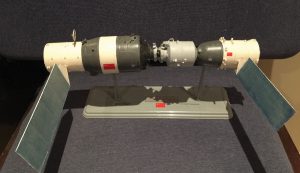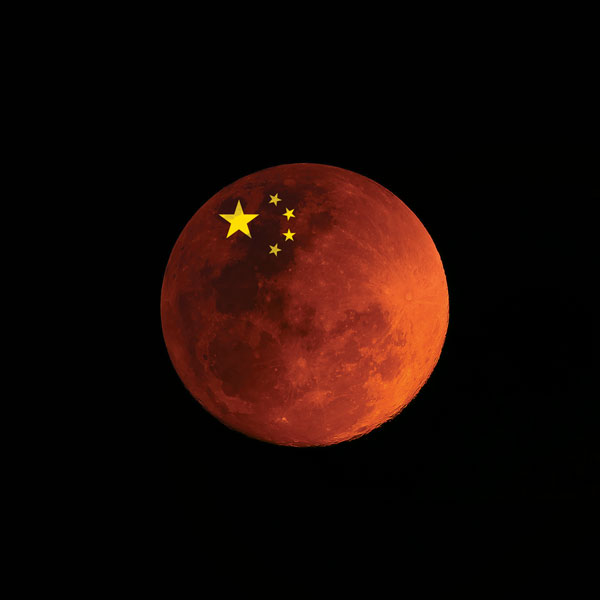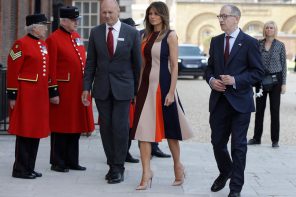Shopping for my adopted Chinese son, Peter, his wife, Gabrielle, and their 1-year -old son Chester, visiting from Chongqing, China, was frustrating. I wanted to give them something typically American, but everything — all the latest fashions, even torn jeans and bomber jackets, toys, household items and hi-tech devices — were all stamped “Made in China.”
Since my grandparents served as missionaries in imperial China, the country has advanced from transporting “Made in China” silk along the Old Silk Road in camel caravans to acting as a major player in space explorations with mounting ambitions. Today, American venture capitalists and multinational corporations lead in technology, but President Xi Jinping’s “China Dream,” incorporating the “soft power” of the Belt & Road Initiative (BRI) that is hailed as the New Silk Road, is pushing a series of complex plans to gain dominance.
One major program, titled “Made in China 2025,” offers a blueprint for China to gain leadership in many roles, including supremacy in artificial intelligence and advanced manufacturing of aircraft and machine tools. China is also racing ahead in technology fundamental to the global economy. By 2020, China is expected to account for some 30 percent of worldwide spending on robotics.
My grandparents worked in China during a dark period of Chinese history known as “one hundred years of humiliation” (1849-1949), which still evokes shame and fury in the minds of the Chinese. China was occupied by eight arrogant foreign powers that had forcibly established foreign concessions in the major port cities. My grandparents were forced to escape during the Boxer Uprising, when 250 missionaries and thousands of Chinese Christians were killed, but my grandparents returned in 1901 for another eight years, built a church and established schools that are still operating.
As missionaries, teachers, students, diplomats, businessmen and journalists, members of my family have personally witnessed the fall of the imperial dynasty (Qing 1644-1911), the failure of the first republic, the warlord period, the Japanese occupation, the Civil War, revolutions, the rise of communism and the remarkable reform and innovation that has transformed China into a global technological force in an incredibly short time.
Today, China is preparing for the future and forging ahead into emerging technology. Only 40 years ago, we saw China as a technical backwater striving to modernize. Now there are more millionaires in China than in the United States. Hundreds of millions own fancy cars and use smartphones to shop online, invest their money and pay for almost anything while whizzing around in high-speed trains and electric cars. The rapid changes have catapulted China to center stage, but China still has millions living under the poverty line. Can China bring its people to a middle-class living standard and fulfill the Chinese Dream?

The Trump administration’s reaction to “Made in China 2025” is to object to China’s hi-tech visions. The administration cites Chinese government support for technology as a primary reason for imposing tariffs on Chinese goods. China, in retaliation to Trump’s threats, is imposing tariffs on a majority of U.S. imports. This intensification of trade tensions could result in a disastrous trade war between the world’s two largest economies.
Trump’s support for fossil energy and passé projects is a win for China. Although the U.S. invented the internet and was first in the solar energy industry, China leads the world and is installing vast fields of wind-power towers. Millions of solar panels are flowing like rivers across the landscape. Hot dry rock geothermal energy found in China, is equivalent to 856 trillion tons of coal, which can generate 2.1 billion kilowatts of electricity.
This past March, China, through secret negotiations with Argentina, opened a $50 million satellite and space station built by the Chinese military. The centerpiece is a 450-ton antenna with its dish, shaped like a giant, upside-down Buddhist stupa, rising 16 stories above 494 acres of windswept fields in Patagonia, enabling scientists to detect radio signals and mysterious paraphernalia in outer space. China aims to complete the satellite-tracking hub on the other side of their globe before it launches a daring expedition to the far side of the moon, which never faces planet Earth.
The mission could be — in the words of Neil Armstrong, who first stepped on the moon on July 20, 1969: “One giant leap for mankind.” In space exploration, it could potentially pave the way for the extraction of helium 3, which some scientists believe could provide a revolutionary clean source of energy and put China ahead. In the meantime, the U.S. is funding the past by propping up fossil industries politically important to Trump. The United States is reacting to technological change rather than anticipating and planning for it. His withdrawal from the Paris Accord and imposing rising tariffs could toss out the rulebooks of aging American-dominated institutions.
Weeks after China’s satellite station began operating in Patagonia, Trump made a surprise announcement that the Pentagon was funding a $1.3 million emergency response center in Argentina’s Neuquén Province, which happens to be in the same province as China’s station. The site, far from population centers and flanked by mountains, is an ideal vantage point for Beijing to monitor satellites and space missions. American officials claim their project is not related to China’s.
As of this writing, the big question looms: Who shall control the high technology industry destined to rule tomorrow? The key players are now a handful of giant American corporations controlling artificial intelligence, quantum computing and energy technologies, competing with a similar handful of government controlled Chinese conglomerates, many in cahoots with American companies.
My hope is that the two largest economies in the world can work together to avoid space and trade wars and instead create a new world order.




